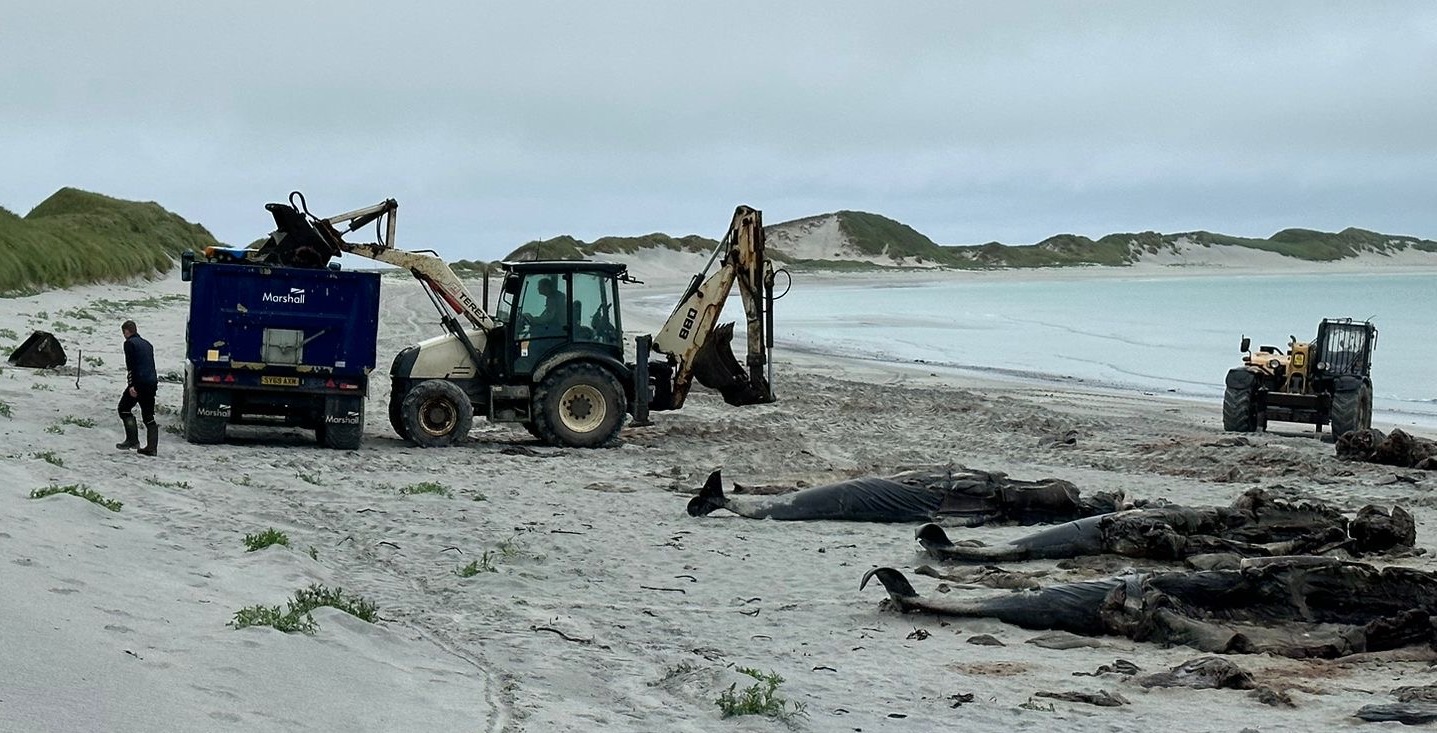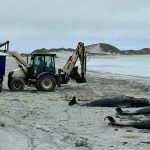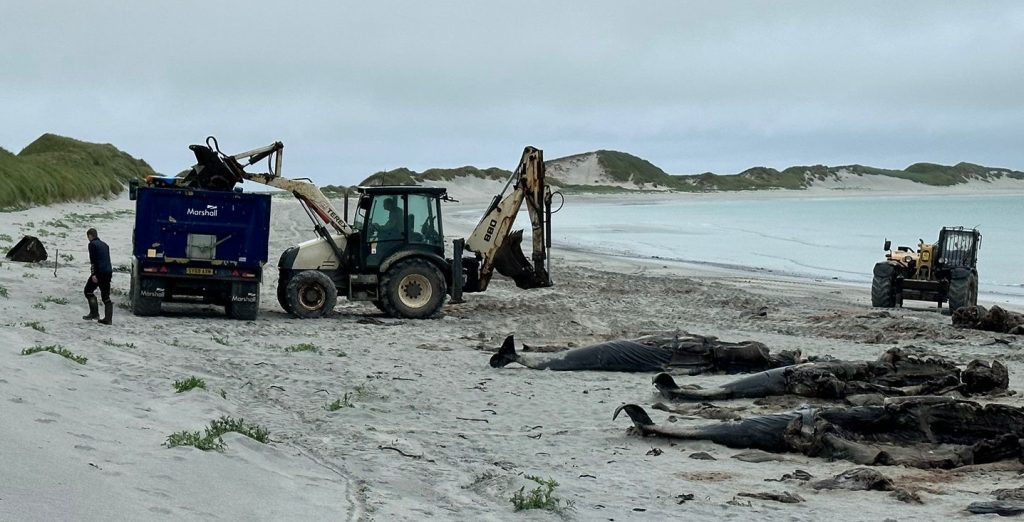

Burial of 76 whales complete as one retained to serve as memorial

Orkney Islands Council (OIC) has shared its thanks to the community in Sanday, and all who responded to the stranding of 77 pilot whales at the island’s Tresness beach, last Thursday.
The burial of the whales has now been completed across eight grave sites — save for one whale, whose skeleton will be retained as a memorial for those lost in the tragedy.
OIC’s corporate director of neighbourhood services and infrastructure, Hayley Green, has share her sincere thanks with those who first responded to the tragedy, particularly resident whale conservationist Emma Neave-Webb, other volunteer medics from British Divers Marine Life Rescue (BDMLR).
“They found 77 whales, including a mix of adults, calves and juveniles,” said Ms Green, who explained that 14 whales (not 12 as was reported earlier) survived the initial stranding.
“Sadly, following consultation with veterinary experts, the decision was taken to euthanise the remaining whales on welfare grounds due to their deteriorating condition.”
It has been widely reported that this is believed to be the largest mass stranding that Scotland has seen since 1927. However, The Orcadian has unearthed reports of such an incident in 1950, in Stronsay, involving 96 pilot whales.
“Every effort was made by all involved to do the absolute best for these beautiful creatures but, sadly, the outcome was not one which anyone would have wanted,” Ms Green added.
“Our focus then had to move on to how best to dispose of the large number of whales. We had many kind offers from landowners and after much consideration with our external partners and the Sanday community, a satisfactory resolution was found with the identification of a suitable site from where to dig eight burial holes — with each containing no more than ten whales.
“Careful consideration had to be given to avoiding areas of specific interest in terms of wildlife, birdlife and archaeology.
“My thanks go to local farmers, particularly James Muir, for his assistance and co-ordination of the removal of the whales and their onward burial. James and other farmers – Adam Towrie, Ian Simpson, John Boyd, Shaun Thomson, Alex Jenkins and Raymond Brown — worked tirelessly to ensure this happened swiftly and with as much dignity as was possible.
“Our gratitude must also go to Orkney Ferries and Orkney Builders for arranging the ferry charter to take additional machinery to Sanday to assist with the removal and burial.”
OIC has confirmed that the burial, which began on Tuesday, has now been completed.
“One whale remains at the beach and will decompose naturally to allow the community to retain its skeleton to serve as a poignant reminder and memorial to the lost whales,” Ms Green said.
“This will be offered to the island’s Heritage Centre on permanent loan from the Scottish Marine Animal Strandings Scheme (SMASS).
“I also want to thank the wider Sanday community, giving special mention to Sanday Community Council chairman, Andy Wilcox, Councillor Stephen Clackson, Jacqueline Seatter and Lucy Drever for their local knowledge and assistance.
“Also, Jackie and Malcolm Sinclair for the loan of a vehicle to get us back and fore to the site and the patience and understanding of those residing at Tresness. To the many accommodation providers, among them Jackie Sinclair, Raymond and Tina Brown, George and Norma Brown, Eleanor Skea, Sadhbh Walker, Helen Porter — and the two local shops and businesses for keeping us fed and watered, we are very grateful.
“I must also give mention to the SMASS, which is the dedicated research and reporting scheme for stranded cetaceans, pinnipeds, marine turtles, and large sharks in Scotland. Their work alongside colleagues from the Cetacean Strandings Investigation Programme (CSIP) has been exceptional and hopefully adds to our knowledge of these particular whales and why this may have happened.
“The scientists will continue their important research work and, it is hoped, that their findings will be made available at a later date.
“As always, we will review how we handled the event and if we can share good practice if this were ever to happen again, or, indeed, if there were any lessons we could learn and improve upon.
“Once again, my heartfelt thanks to everyone who has helped in any way with this tragic occurrence both locally and from our external partners.”